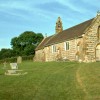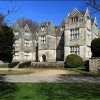The first Earl of Shaftesbury, Anthony Ashley Cooper, was a quite amazing man who in a frenzied, tumultuous and almost feverish life changed from the Royalist to the Parliament side in the Civil War, later serving under Charles II. He lived from 1621 to 1683, and was only 10 when he succeeded to huge estates at Wimbourne St.Giles in Dorset and elsewhere, his mother having died in 1628. He entered Exeter College, Oxford and Lincoln’s Inn, and was elected MP for Tewkesbury in 1640.
In 1642 he was accompanying King Charles I at Nottingham and Derby, conveyed the offer of the Dorset gentry to support the king, and actually raised foot and horse at his own expense. Yet when it seemed he might become governor of Weymouth he resigned his commission and joined with Parliament. Soon he was in charge of the forces in Dorset, capturing royalist strongholds and taking Corfe Castle in 1646.
From 1646 to 1648 he was Parliamentary High Sheriff for Wiltshire, and in the succeeding years he sat for Wiltshire in Cromwell’s parliaments, served on the council of state and was actually imprisoned as a political suspect in 1659, seized the Tower of London and persuaded the Fleet to declare for Parliament.
In March 1660 he was negotiating with Charles II. Two months late he was admitted as a privy councillor and in June he received a formal pardon for his past actions. In 1661 he was created Baron Ashley and became Chancellor of the Exchequer, and in the following years he received grant of land in Carolina and an interest in the Bahamas. In 1667 he became Lord Lieutenant of Dorset.
He was a supporter of the Duke of Monmouth, and in 1672 we find him approving Charles II’s Declaration of Indulgence for Protestant dissenters. The same year he was created Earl of Shaftesbury. He once annoyed the king’s mistresses by refusing grants of money to them, and he was also opposed to the prevailing despotic rule in Scotland. In 1673 he was dismissed as chancellor, and the next year from the Privy Council and as Lord Lieutenant.
Refusing to obey the king and leave London, he was imprisoned with others by order of the House of Lords in 1677 but released the following year, when he supported the ‘Papist Plot’ scare movement. The same year he was leading the Opposition in Parliament and president of the Privy Council, though he was soon dismissed from office.
After bringing in a Bill to repeal penalties against Protestant dissenters, he was committed to the Tower and charged with high treason in 1681 but was released by a Whig grand jury, and soon after he was planning a revolt in London, Cheshire and the West of England. Escaping to Holland via Harwich, he was made a burgher of Amsterdam in 1682. There he died: his body was brought back to be buried at Poole in Dorset.



